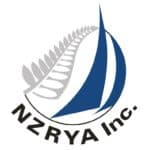1. OBJECTIVE
After completing this module, you will have a sound knowledge of the tasks to be performed in preparation for the day’s sailing.
2. REFERENCES
For this module, you will need access to the current versions of the following references:
- Racing Rules of Sailing 2021 – 2024 (RRS)
- NZRYA Race Management Manual (NZRYA RMM)
- NZRYA-Standard-Notice-of-Race (NZRYA SNOR)
- NZRYA Standard Sailing Instructions (NZRYA SSI)
3. SUGGESTED READING
You should read the following and any other section to aid your understanding for this module:
- Racing Rules of Sailing:
- Appendix E: Radio Sailing Racing Rules
- E3.3 Course Board
- Part 6: Entry and Qualification
- 75 Entering a Race
- 76 Exclusion of Boats or Competitors
- Appendix E: Radio Sailing Racing Rules
- NZRYA Race Management Manual:
- 10 Courses/Course Board
- Job Descriptions
- Race Officer
- Start / Finish Officials
- Managing the Fleet Board
- Guidelines for Observers
- Boat Driver’s Information
- NZRYA Standard Notice of Race:
- 2.4
- E3.1 Control Area
- E3.2 Launching Area
- E3.3 Course Board
- 3 Eligibility and Entry
- 2.4
- NZRYA Standard Sailing Instructions:
- 1.3
- E3.3 Course Board
- 1.3
4. PRIOR TO THE EVENT
Exclusion of a Boat or Competitors
RRS 76.1 details when a competitor’s entry may be rejected and the procedure to be followed. In addition, the NZRYA Notice of Race states entry will be denied to anyone who has been expelled or is currently serving a suspension from NZRYA or any state or territory RC sailing association affiliated with NZRYA.
The Race Committee must consider taking any action to reject a competitor carefully. This should be done at the time of entry and well prior to the competitor arriving at the event.
5. ON THE DAY OF THE EVENT
Administrative Tasks
Before racing commences, there are a number of administrative and practical tasks that must be completed.
As Race Officer, you must ensure that all competitors:
- have entered correctly
- registered during the registration period and
- have completed any check measurements.
This entails liaison with the Organising Authority, the Registrar and the Event Measurer.
Once this has been completed, ensure that the Scorers have all the correct details of the entries. A useful practice is to allocate a member of your team to wander around the boat park, and take a roll call – check off the names from the master entry list – to see who has actually arrived.
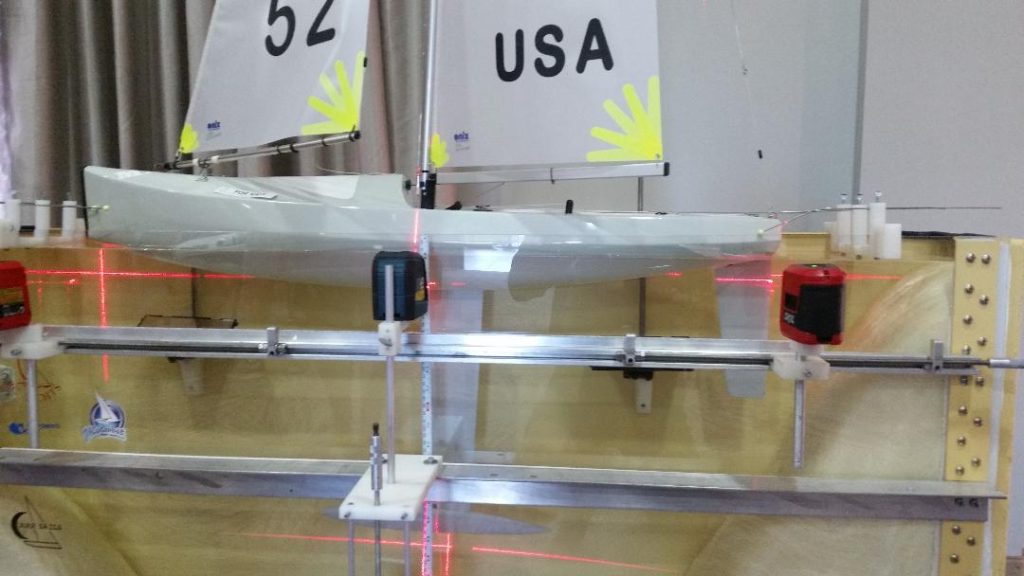
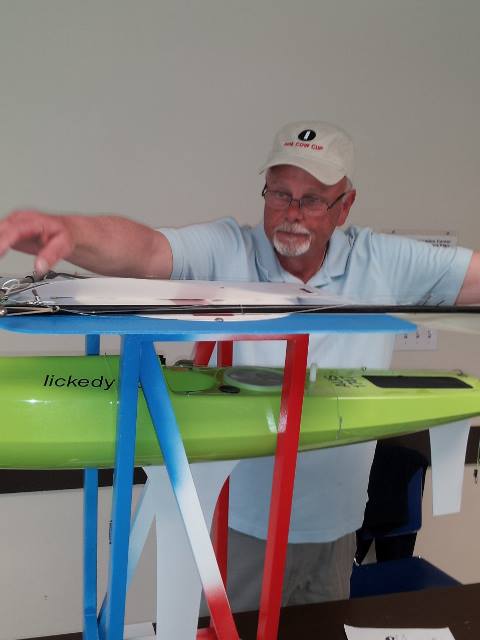

Make sure all your equipment is ready and working properly.
Brief the Officials
Prior to conducting the skippers briefing, it is important to ensure that your Race Committee team are instructed and understand their roles. Make time to assure yourself that everyone knows where they have to be and what they are asked to do.
The NZRYA Race Management Manual contains job descriptions for each of the roles involved in managing a regatta. It would be wise to send copies to your volunteers a couple of days prior to the regatta so they have a chance to read them.
It is important that the members of your team are enabled to perform their roles with a minimum of interference, but your role is as a supervisor, so keep an eye on them. The team must be able to approach you with problems or questions at all times, so encourage them to do so.
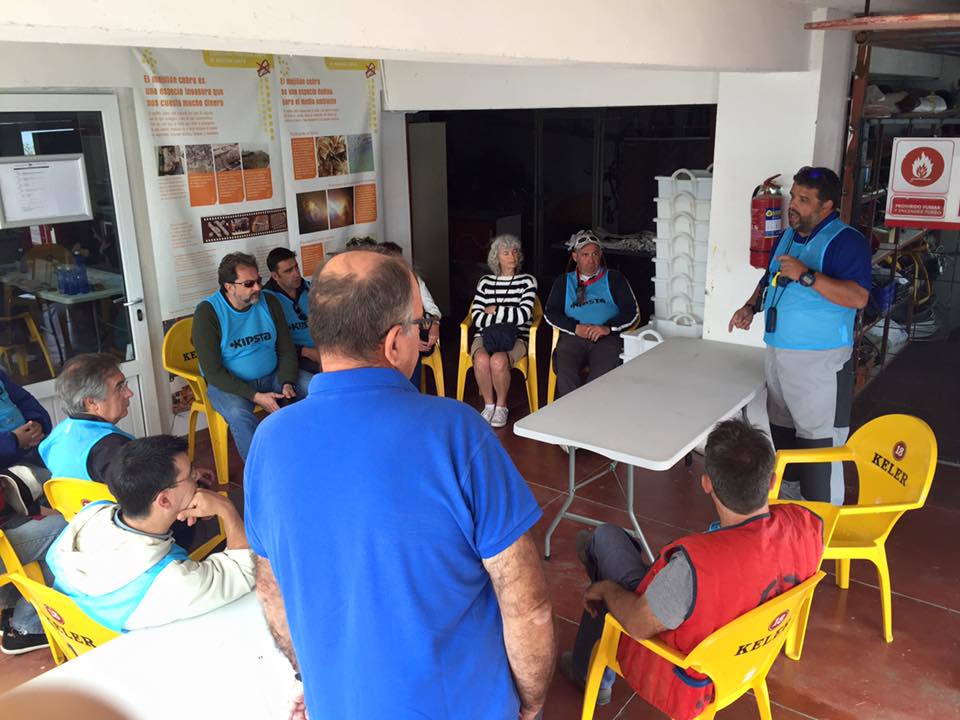
Set the Course
Module 5 will address all the details regarding course setting, but there are a few general points to consider:
- Make sure you have studied the wind and weather forecast for the day.
- Consider the position of the sun and where it is likely to travel throughout the day, as thiswill affect visibility greatly.
- Consider the impact of the tide, if any, on water levels.
- Consider the surrounds (rock walls, concrete walls etc.) when placing the course.
- Consider the placement of the control area for skippers and officials.
- Consider the ability of participants to sight the start and finish lines, as well as the course.
- Plan the course in your mind, and communicate with your boat drivers before they launch.
- Plan the course so that it takes between 10 and 15 minutes for the first boat to complete it.
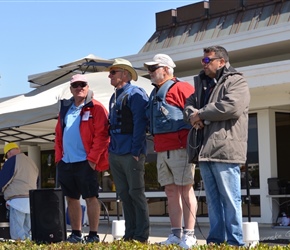
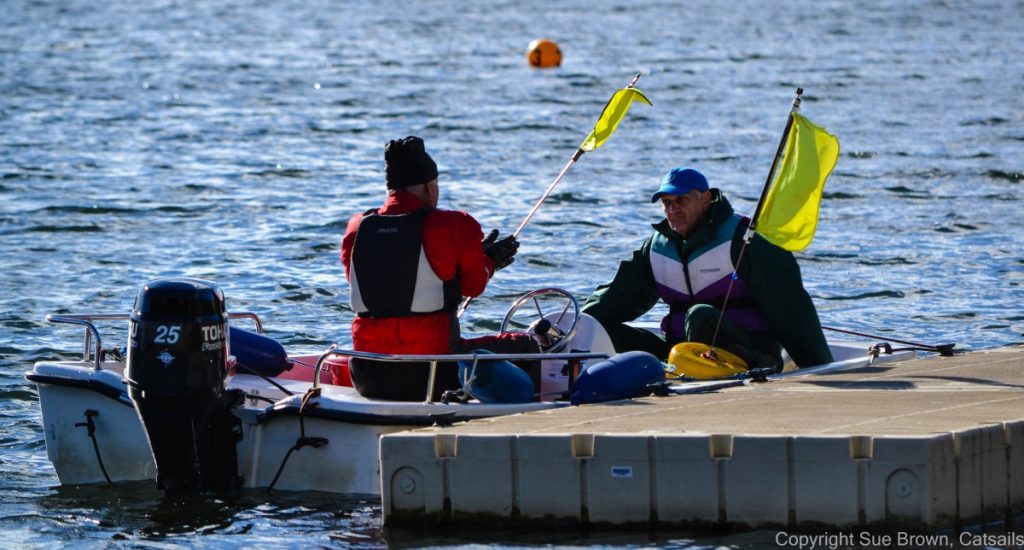
Sue Brown Photo ©
The message is that there should be good communication and planning between members of the Race Committee.
6. COURSE BOARD
The course must be shown on the Course Board, which needs to be visible for skippers in the control area when racing. (See RRS Appendix E 3.3.)
NZRYA SSI 1.3 amends RRS E3.3 and makes a Course Board mandatory for ranking events. The course board is to show:
- Initial Course
- One Shortened Course (if one is to be used)
- Description of the buoys (this is usually their number, or if no numbers, their colour)
- Direction and sequence buoys are to be passed
- Control Area
- Launching and Recovery area.
Experience has shown that the course should not be ‘explained’ by the RO, as it can cause confusion. The Course Board must speak for itself. If competitors remain puzzled or confused after consulting the Course Board, it needs to be improved or corrected.
Experience has also shown that the course to be sailed should not be illustrated on the course board with drawings or lines connecting marks or by showing the rhumb lines. Instead, the board should simply state the course as a list of marks and start or finish lines, and for each mark, whether they should be passed on port or starboard.
Whenever possible, buoys should be located in the order of rounding. The buoys are drawn on the course board and listed in the order they are to be passed.
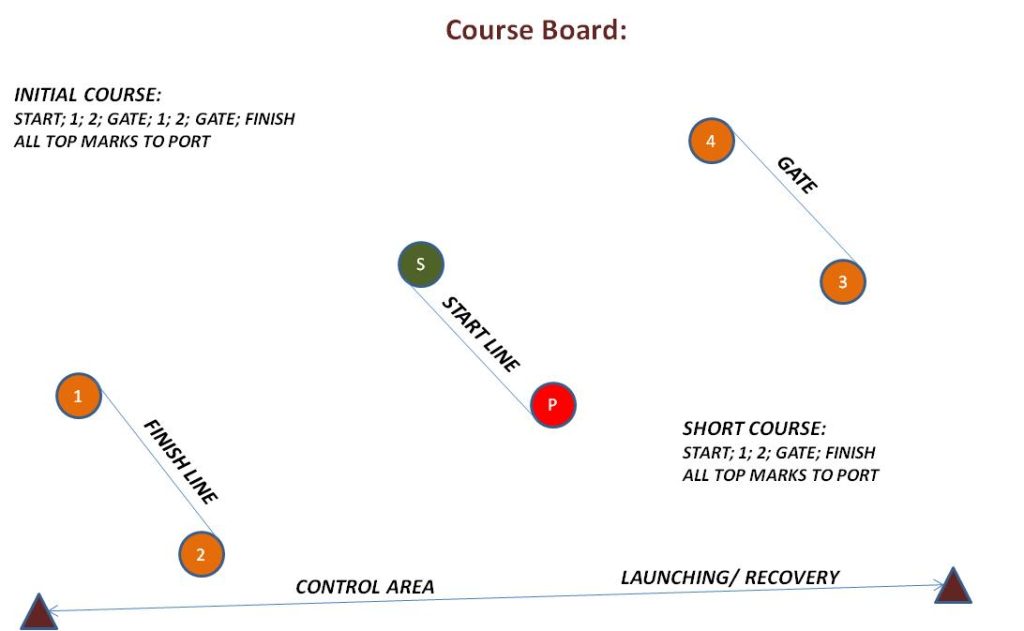
In New Zealand, the Sailing Instructions allow for a single, shortened course option to be described on the course board. The Race Officer has the ability to shorten the course by making two sound signals and announcing “Shortened Course”, provided this is done before the leading boat reaches the gate for the first time.
Some examples of course boards which demonstrate some details which are not self-explanatory:
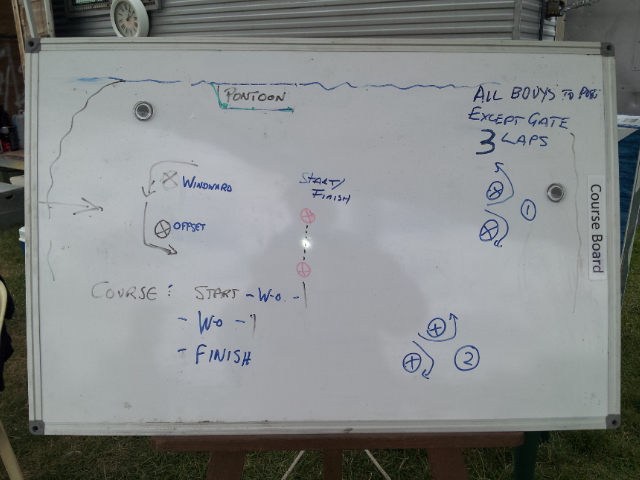
A competitor would have no idea what is the correct course to sail.
In addition, skippers need to interpret about how two gates operate, and how the board indicates which one to use in the race.
Another example of a course board which demonstrates a number of details which could be improved:

A Windward Leeward course is shown.
There is no indication of which is the start line. It has to be inferred.
It also needs to be inferred that “P” stands for port rounding.
It would be preferable to leave the lines which connect the marks out of the diagram.
END OF MODULE 2.
Return to Race Officer Training Course
